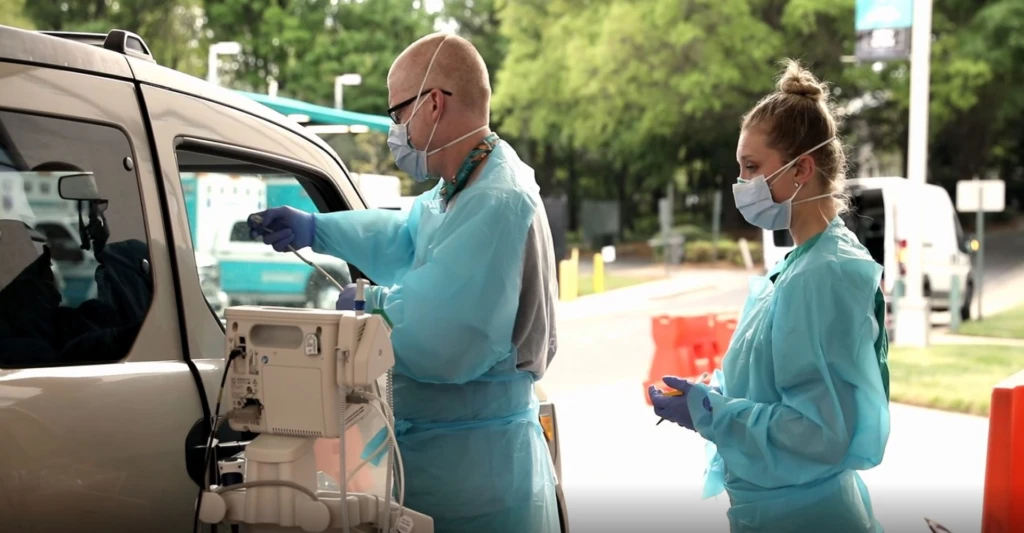
Key learnings from emergency communications
One very unsettling aspect of the COVID-19 pandemic is how it has exposed weaknesses in the communications plans that are meant to helpful. But in this moment, a communications cacophony rules. Medical and governmental authorities have messages they need to get to everyone. Businesses have a set of specific messages for employees and another set for customers. There are calls for calm and calls for action.
In times like these, strong, focused communications are a critical part of crisis response. Most importantly, there is no harmless margin for error. Erroneous information, late-arriving instructions, and confusing “next-steps” can all have dire consequences.
Can history be our guide?
Ironically, best practices are derived from accumulated experiences. The world has never seen this situation, so in some ways the best practices for addressing a modern global pandemic are being formulated right now.
By collecting communications usage and effectiveness reports as the emergency continues, we’ve gained some key learnings to help you prepare your communications plans for the next phase:
1. Choose your target audience carefully
Don’t fight chaos by trying to overwhelm it. Every customer is being swamped with information—much of it repetitive—from email, television, radio, social media, government mailings, Emergency Management official announcements, and more. Add in frantic phone calls and online video chats and you have a truly cluttered environment for your message.
Recognize this context and adapt your communications to it. Avoid sending blanket emails to your entire customer list. Use sophisticated segmentation capabilities in marketing automation software. That way, you’ll target the right audience for specific types of messages. Customers will recognize that your communications are focused and useful, while other companies may be clogging their inboxes.
2. Get the word out quickly
Your communications will reach its target audience when they are likely under pressure. Keep that persona of a stressed individual trying to absorb and process critical information as rapidly as possible as you develop your communications plan.
Take steps to make sure your communications are timely. You can leverage easy-to-use content-creation tools and built-in customizable templates to quickly get the word out.
Help recipients with sight or hearing conditions to grab the information clearly by checking the accessibility. There will be plenty of anxiety in the situation; good communications can reduce that unease and make for a more effective result.
3. Empathy should guide you
It’s a fine line, but as an emergency’s first impact is absorbed, companies can give in to the temptation to shift to tone-deaf promotional campaigns. “We’re here to help” is very different from “We’re listening and here’s how we’re helping.” Center your communications on demonstrating that you are committed to understanding on a deep level what people are going through. The human connection can be the strongest communications tool.
4. Make it easy to take the next step
Use your customer interactions insights to identify their imminent needs and guide them to the next step. Consider creating a web landing page as a single source for resources to help customers take action quickly. In times on uncertainty, the more clearly you can convey your understanding and present the way forward, the more valuable your communications will be.
5. Improve digital meetings and events
The COVID-19 emergency response that included isolation and distancing has quickly impacted the most basic of activities: human in-person interaction. We have to come to grips with the reality that virtual meetings will dominate the next phase and learn how to optimize their effectiveness. Microsoft Teams is an easy way to adopt digital engagement with its easy-to-use audio, video, chat, and screen-sharing capabilities.
During a recent interaction, our key partner ON24 shared some best practices for organizing digital events. For example, online meetings or events need to be paced differently than group gatherings: shorter segments, audience polls, or other participatory events can hold peoples’ interest as there is no “audience” to share experiences.
Let’s now look at how some of Microsoft Dynamics 365 customers have leveraged these good practices to manage emergency communications.
There is no playbook for this situation, but action is the only option. – Team Rubicon
Watch the video below to learn how Team Rubicon uses Dynamics 365 to serve communities during crisis.
A crisis has its own timetable and waits for no one. Team Rubicon brings together the skills and experiences of military veterans with first responders, medical professionals, and technology solutions. Leveraging their abilities, training, and experience, they help people prepare, respond, and recover from disasters and humanitarian crises.
Because its strength is its volunteers, Team Rubicon must have the ability to rapidly communicate to those volunteers wherever they may be, then assemble response units to meet the most dire needs.
Team Rubicon considers the skill set and availability of volunteers as it maps response plans, but the pandemic created an additional factor: identifying volunteers who would be high-risk because of age or medical conditions.
“Become part of the fabric of American communities, continue to serve communities after the disaster, and never stop imagining how technology can improve how we operate.” – Art dela Cruz, President and COO, Team Rubicon
Calling Team Rubicon into the battle against COVID-19 demanded rapid communications informed by precise segmentation. Microsoft Dynamics 365 Marketing met the challenge.
The Team relied on Dynamics 365 Marketing and Microsoft Dynamics 365 Sales solutions to quickly engage with more than 120,000 volunteers, including activating the volunteers with the lowest risk for COVID-19. Its initial response included the swift establishment of more than 80 COVID-19 response operations running nationwide, including a drive-in testing center in Charlotte, North Carolina that is able to process 1,000 tests a day—there are three more in the planning stages—and a 250-bed field hospital in Santa Clara, California.
Timely communications: Getting it right the first time

On the opposite side of the world, COVID-19 began its attack on New Zealand. The Ministry of Health tasked Manawanui, a private organization, with sending critical crisis-related information to people with disabilities and capturing the requirements for personal protective equipment (PPE) for their caregivers.
One critical challenge: Manawanui had to accomplish this on the same day the Ministry of Health delivered its instruction.
Timing is everything. Manawanui had completed set-up of Dynamics 365 Marketing only days earlier so it considered using its incumbent solution for the first campaign. However, the organization decided to go with Dynamics 365 Marketing to meet the daunting deadline.
“Customers and their caregivers needed personal protective equipment quickly. Only 11 hours after launch, Dynamics 365 was connecting us with New Zealanders in need.” – Marsha Marshall, CEO Manawanui
Their trust was rewarded. Manawanui launched the app and ran a campaign that met their goal in only 11 hours. Today, Dynamics 365 Marketing continues to excel under crisis conditions, enabling Manawanui to successfully contact thousands of disabled New Zealanders and their families to ensure that they continue to receive support at this critical time.
Changing communications paradigms
True to its tumultuous nature, the COVID-19 pandemic is contorting what we would consider “normal” in how we create, distribute, and measure the effectiveness of communications campaigns.
First, the way they’re received defies past experience. Organizations may see dramatic spikes in communications to their audience such as employees and customers. When your target audience is so hungry for information, creative strategies and compelling subject lines become essentially irrelevant. These statistics are likely an anomaly brought about by the impact of the pandemic, but they may signal a foundational change in how we conceive and create campaigns that use marketing automation.
Second, it will be intriguing to track how the compressed time frame with which the pandemic hit and the communications response alter expectations going forward. Launching a nationwide campaign in a single day, as Manawanui did, is a highly impressive feat, achieved under extraordinary pressure. Will companies demand this level of speed outside of crisis conditions? What will the performance expectations for customer communications campaigns be once normalcy (or however close we can come to it) returns?
There is no doubt that communications are changed in a crisis. The question looking ahead is how will customer engagement be transformed by this crisis?
Learn more about Dynamics 365
- Explore the capabilities of Dynamics 365 Marketing and Dynamics 365 Sales applications to manage relevant communications and accelerate digital selling
- Learn how to support your COVID-19 responses using Dynamics 365
- Please contact your Microsoft sales representative or contact our sales team via chat, phone, or email




